I’m the co-founder and “convenor” of a monthly-ish series of informal online “sessions,” put on under the aegis of the biannual conference Semiofest. Conceived of at the height of the Covid pandemic, these events are intended not only to share best practices among, but to nurture collegiality and friendship within the global semio community.
In July 2025, Adelina Vaca joined me as co-convenor of the sessions. She and I issued the following invitation, as we look ahead to 2026:

Below, please find a complete list of Semiofest Sessions since we began in April 2021.
2026
GUILTY PLEASURES (#43 — 1/26). Gabriela Pedranti, host.
MYTHICAL SEMIOTICS (#44 — 2/26). Alfredo Troncoso, host. Placeholder description: “I do not aim to show how men think in myths,” claimed Lévi-Strauss, “but how myths think in men, unbeknownst to them.” We have invited several commercial semioticians interested in mythology to explore how myths of new beginnings, transition, heroism, totemism, and so forth play an influential role in pop culture and brand communications.
DOING SEMIOTICS IN LATIN AMERICA (#45 — 3/26). Mariane Cara, host.
TBD (#46 — 4/26).
FESTSCHRIFT FOR MALCOLM (#47 — 5/26).
VISCOSITY (#48 — 6/26).
TBD (#49 — 7/31).
TBD (#50 — 9/25).
TBD (#51 — 10/30).
TBD (#52 — 11/27).
2025

MEDICAL SEMIOTICS (#33 — 1/25). Yogi Hendlin, host. The art of medical diagnosis (known in Greek antiquity as techne semeiotike) shares a long history with semiotics. Today, medical professionals increasingly recognize that the molecules, enzymes, and alkaloids with which we come in contact initiate sequences of semiotic transformations in our bodies at macro-, meso-, and micro-scales. Also, medicine is more than chemistry: How a society regards medicine, health, and disease is itself influenced by semiotic codes. Yogi Hendlin (Netherlands) has invited Ramona Lyons (USA) and John Tredinnick-Rowe (England) to discuss the current state — and future — of medical semiotics.
PEIRCE & PERCEPTION (#34 — 2/25). Rejecting the Western “mirror” model of cognition that underpins our conventional view of perception, C.S. Peirce argues that signs are made by each of us, as we seek to understand the world around us. This is how we become integrated in our own cultures. Chris Barnham will discuss the implications of Peirce’s model for commercial semiotics; and Serdar Paktin will describe what happens when the Western model of perception is imposed upon non-Western cultures.
SEMIOTICS & SPIRITUALITY (#35 — 3/25). Adelina Vaca, host. The intellectual, but also physical and emotional experience of doing semiotics not only dilutes our sense of certainty, but can engender in us a feeling of unreality — which is not dissimilar to those experiences that might be described as mystical, sublime, or spiritual. Although (most) semioticians are not mystics, like spiritual seekers we are very much in pursuit of the unknown, perhaps even the ineffable or unfathomable. Inspired by such insights, Adelina Vaca has invited three colleagues to offer perspectives on the meaning, and the lived experience, of “spirituality.”
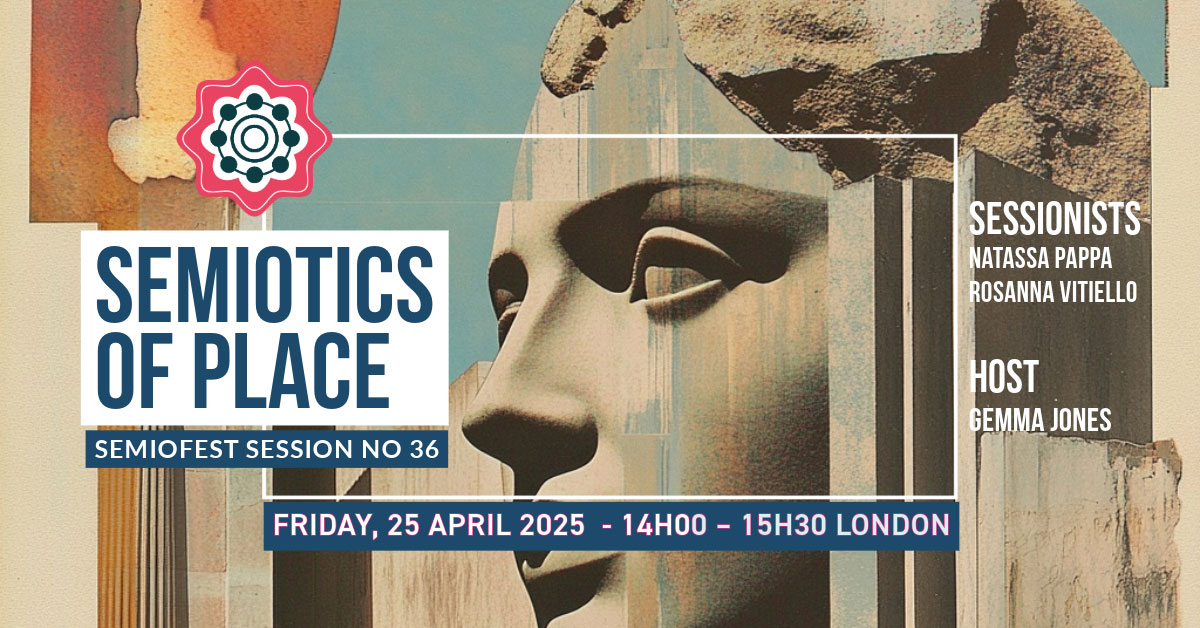
SEMIOTICS OF PLACE (#36 — 4/25). Gemma Jones, host. Place can be a powerful way for brands and cultural strategists to generate meaning and value… and at the same time, in a world of bland developments and cut-and-paste tourism, semiotics can provide a crucial tool for meaningful place shaping. Gemma Jones invited place-oriented practitioners to discuss place as a cultural “text”… and to share creative methodologies for developing a place-based participatory semiotics.
RISE OF THE RIGHT (#37 — 5/25). Louise Jolly and Al Deakin, hosts. Now that the liberal consensus has collapsed and the right is resurgent across the Western world and beyond, semioticians and their marketing colleagues are asking, “How do we adapt — while resisting fascism?” Session hosts Louise Jolly and Al Deakin have invited Nick Asbury and Charise Mita to join them in an exploration of how neo-liberalism and globalisation, which nourished the rise of commercial semiotics, contributed to today’s situation; the right-wing reaction to the “Corporate Purpose” era; and how semiotics and social psychology can most usefully and positively contribute to this historical juncture.
ART & SEMIOTICS (#38 — 6/25). Aiyana Gunjan, host. Art offers a profound, rich vehicle for decoding a culture’s emotional landscape and symbolic layers. Session host Aiyana Gunjan, an artist and commercial semiotician, has invited Seema Khanwalkar and Thierry Mortier to “read” classic and contemporary art works — demonstrating how these works navigate cultural tensions and deconstruct taken-for-granted norms and forms. The sessionists will also offer expert advice on how art, viewed through the lens of semiotics, can offer inspiration and insights for branding.
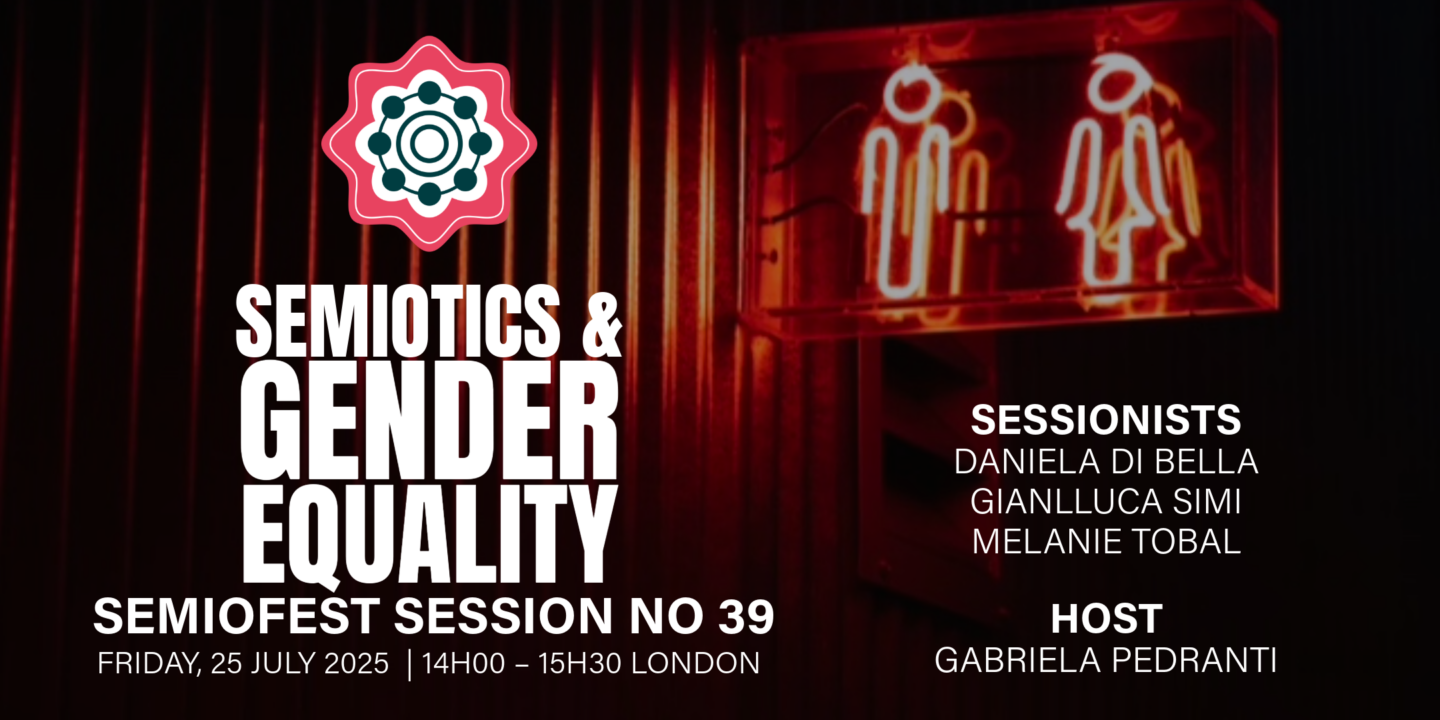
SEMIOTICS & GENDER EQUALITY (#39 — 7/25). Gabriela Pedranti, host. How can semioticians challenge outdated frameworks around gender roles while amplifying diverse voices in the world of communications? Gabriela Pedranti has invited Melanie Tobal, Daniela Di Bella, and Gianlluca Simi to discuss diversifying creative teams, advocating for representation that genuinely reflects the diversity of societies, and more. The goal is to introduce tools and resources for semioticians who are inspired to reshape narratives around gender and diversity in marketing and advertising.
NARRATIVE SEMIOTICS (#40 — 9/25). Serdar Paktin, host. Narratives influence our beliefs and actions, even our perception of reality. So when it comes to influencing global perceptions, driving social change, and consolidating symbolic and political power, it’s crucial to use the tools offered by narrative semiotics. Serdar Paktin, host of this session, has invited Sarah Dodge (Ellen MacArthur Foundation) and Laura Jordan Bambach (Uncharted) to unravel the semiotic strategies behind impactful narratives across diverse domains—social activism, design, advertising, marketing, politics—thus allowing us to grasp their profound implications.

CASE FILES (#41 — 10/25). In the regular course of our research and analysis, we commercial semioticians tend to discover all sorts of things — whether amazing, amusing, or tragic — that challenge our assumptions, make us sit up and say “Wow!”… but that don’t necessarily mesh well with the client’s brief or business objective. Josh Glenn has invited semio colleagues from China, Portugal, Argentina, Sweden, Mexico, and Italy to share their stories of serendipitous discoveries… and to reveal how these were received by their clients.
DOING SEMIOTICS IN ASIA (#42 — 11/25). Coco Wu, host. Placeholder description: How do clients react differently in Asia and how does that change the implication of semiotics? How does Eastern Asian philosophy/ideology impact the RDE, e.g. time is circular, not linear? Tensions between local insights vs global strategy, how do we not compromise on the quality of the localness but also convince wider audiences?
2024
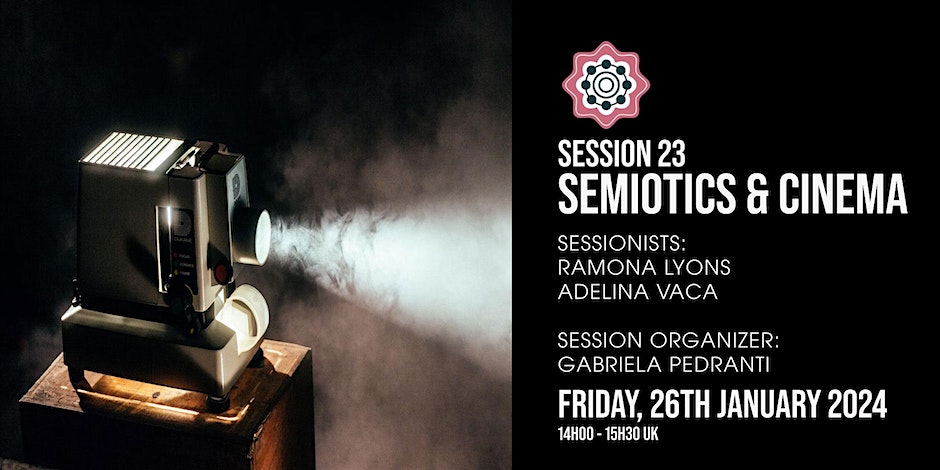
SEMIOTICS & CINEMA (#23 — 1/24). Gabriela Pedranti, host. Semioticians have long been fascinated with cinema. From Barthes’ analysis of “Roman-ness” in Hollywood epics to commercial semioticians’ deployment of movie scenes to help clients understand aspects of contemporary culture, we can’t stop decoding what materializes on the silver screen. The participants in this session shared their enthusiasm for movies — and for movie analysis.
SEMIOTICS & MUSIC (#24 — 2/24). Charles Leech, host. In practical visual semiotics we generally first identify a denotation and then seek to identify and understand its connotation. Musical semiotics, however, is the opposite: it’s easy, even intuitive, to identify a musical connotation, but then trying to identify the denotative level is very difficult. How then are we to understand how music communicates? How might synesthesia play into it?
SEMIOTICS & ETHICS (#25 — 3/24). Lucia Laurent-Neva, host. Three applied semioticians explored the rarely discussed ethical implications of semiotics work — especially in the context of sustainability, health, and the impact of technology on information manipulation. Drawing on their own experiences, our guests covered topics such as diversity, identity representations, biosemiotics, mental health, and the broader ethical landscape of contemporary society. The goal is not so much to provide answers as to provoke conversation.
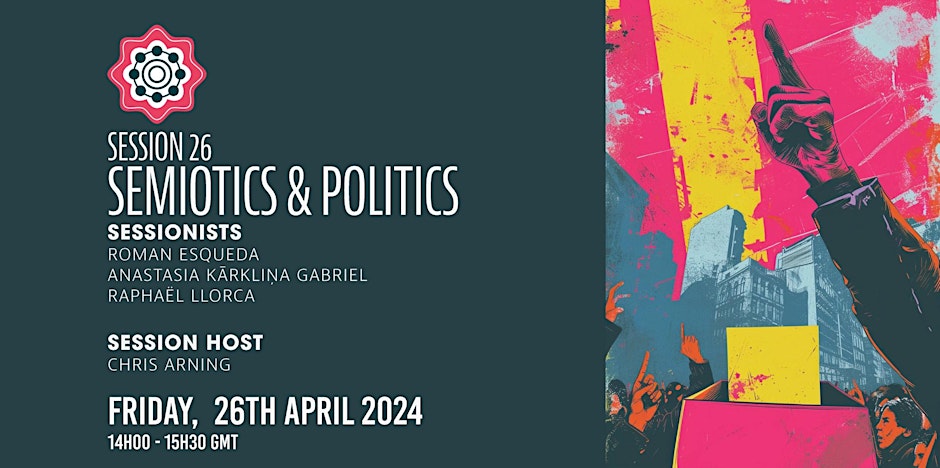
SEMIOTICS & POLITICS (#26 — 4/24). Chris Arning, host. As semioticians, we are valued not only for our expertise but our objectivity. In a world (and branding landscape) becoming more ideologically polarised, how can applied semiotics meaningfully engage with political issues? In this session, three experienced semioticians shared their perspectives on election-campaign communications, how brands mediate nationhood, and how activists can make use of cultural-insights work.
LIMINALITY POST-PORTO I (#27 — 6/24). Sónia Marques, host. The theme of Semiofest Porto, in May, was LIMINALITY. The conference was a great success… but we all wanted more! So Sónia Marques (Portugal) has invited Jerry Mathew (India), Alice Sweitzer (Germany/USA), and Shion Yokoo (Estonia) to chat with us about: Bridging Cyber Liminality and Ancient Wisdom, The Semiotics of Protest and Demonstration in Berlin’s Consumer Culture, and Liminality and Theatricality in Performances. This is the first of two liminality-themed post-Porto sessions.
LIMINALITY POST-PORTO II (#28 — 7/24). Susanna Fránek, host. The theme of Semiofest Porto, in May, was LIMINALITY. The conference was a great success… but we all wanted more! So Susanna Fránek (USA) has invited Christo Kaftandjiev (Bulgaria), Ashley Mauritzen (UK), and Marie Lena Tupot (USA) to chat with us about: Heroic Myths of Transition in Mass and Marketing Comms, The Crisis of Western Masculinity, and Gender as the Epitome of Liminality. This is the second of two liminality-themed post-Porto sessions.

FICTIONAL DECODERS (#29 — 9/24). Josh Glenn, host. Encountering a talented “decoder” in a work of fiction is entertaining, and for semioticians it can also prove inspiring. Josh Glenn invited Becks Collins (UK), Whitney Dunlap-Fowler (USA), Eugene Gorny (Thailand), Rachel Lawes (UK), Chirag Mediratta (India), and Antje Weißenborn (Germany) to discuss a few favorite decoders from literature, movies, TV shows, and anime too!
ON COLOUR (#30 — 10/24). Lucia Laurent-Neva, host. We’ve invited colour experts and theorists from outside our own discipline to discuss how colours are understood, classified, and employed. Alexandra Loske (UK), Pete Thomas (UK), and James Quail (UK) shared insights on how colour systems reflect evolving social and cultural dynamics; how the ‘materiality’ of colour connects with broader historical contexts and design practices; the cultural biases and commercial interests involved in colour naming; and more. Host: Lucia Laurent-Neva.
JURI LOTMAN (#31 — 11/24). Maarja Ojamaa, host. When it comes to making sense of our contemporary moment, the theorizing of the University of Tartu’s Juri Lotman (1922–1993) remains highly relevant. Maarja Ojamaa (Estonia) has invited Max Matus (Mexico), Maria Papanthymou (Greece), and Auli Viidalepp (Estomia) to discuss how Lotman’s key concepts — including the “semiosphere,” cultural “unpredictability,” and the “growth of meaning” — can inform applied semiotic work around branding, public education, and artificial intelligence.
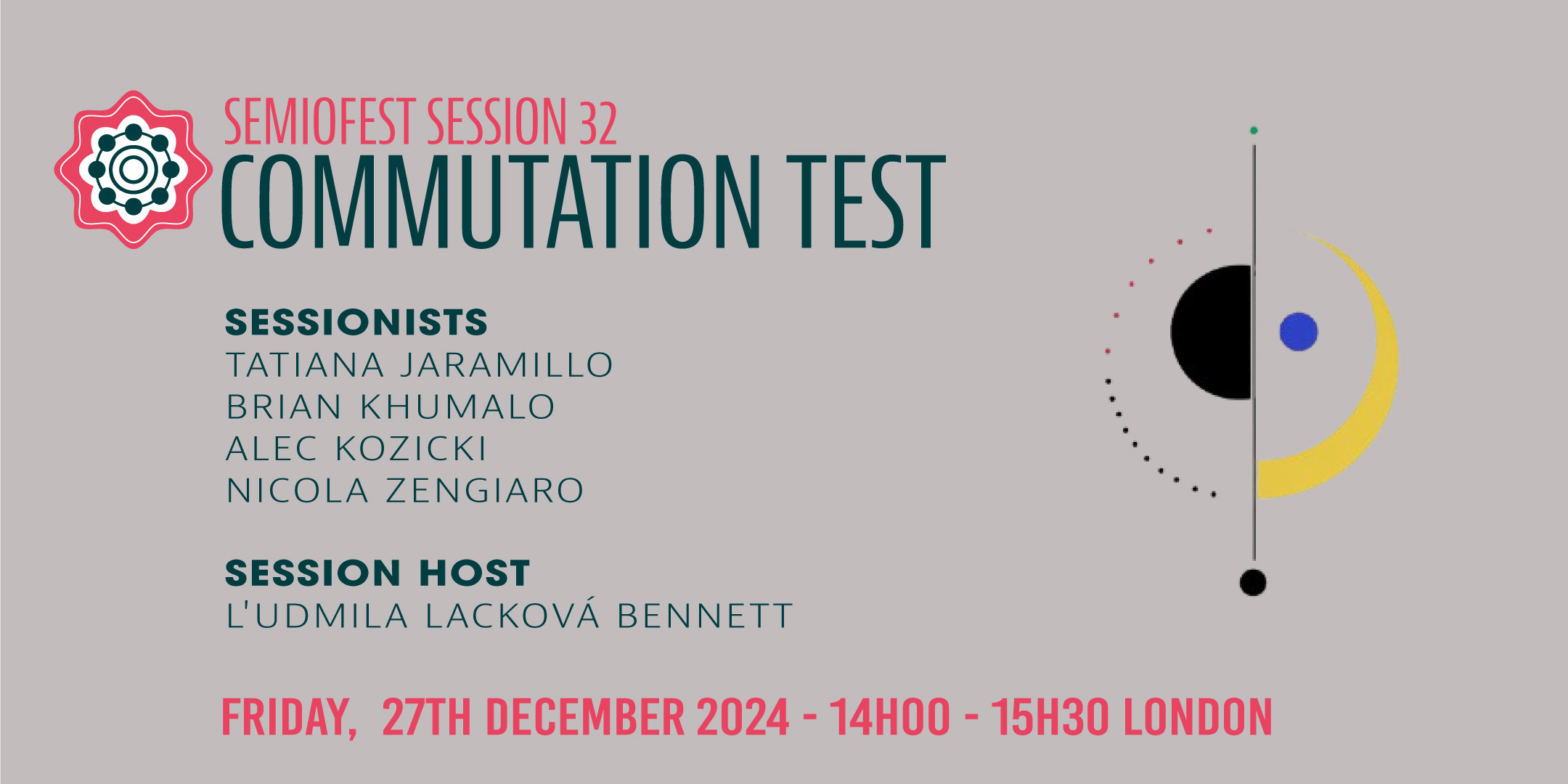
COMMUTATION TEST (#32 — 12/24). L’udmila Lacková Bennett, host. When we swap out a marketing campaign or brand’s signifiers for close alternatives, which signifiers are revealed to be meaningful… and which meaningless? L’udmila Lacková Bennett (Czechia) has invited semioticians from various fields to discuss the “commutation test,” an overlooked methodology from structural semiology that could prove a useful tool for commercial semiotics. Tatiana Jaramillo (Italy), Brian Khumalo (South Africa / USA), Alec Kozicki (Estonia), Nicola Zengiaro (Italy).
2023
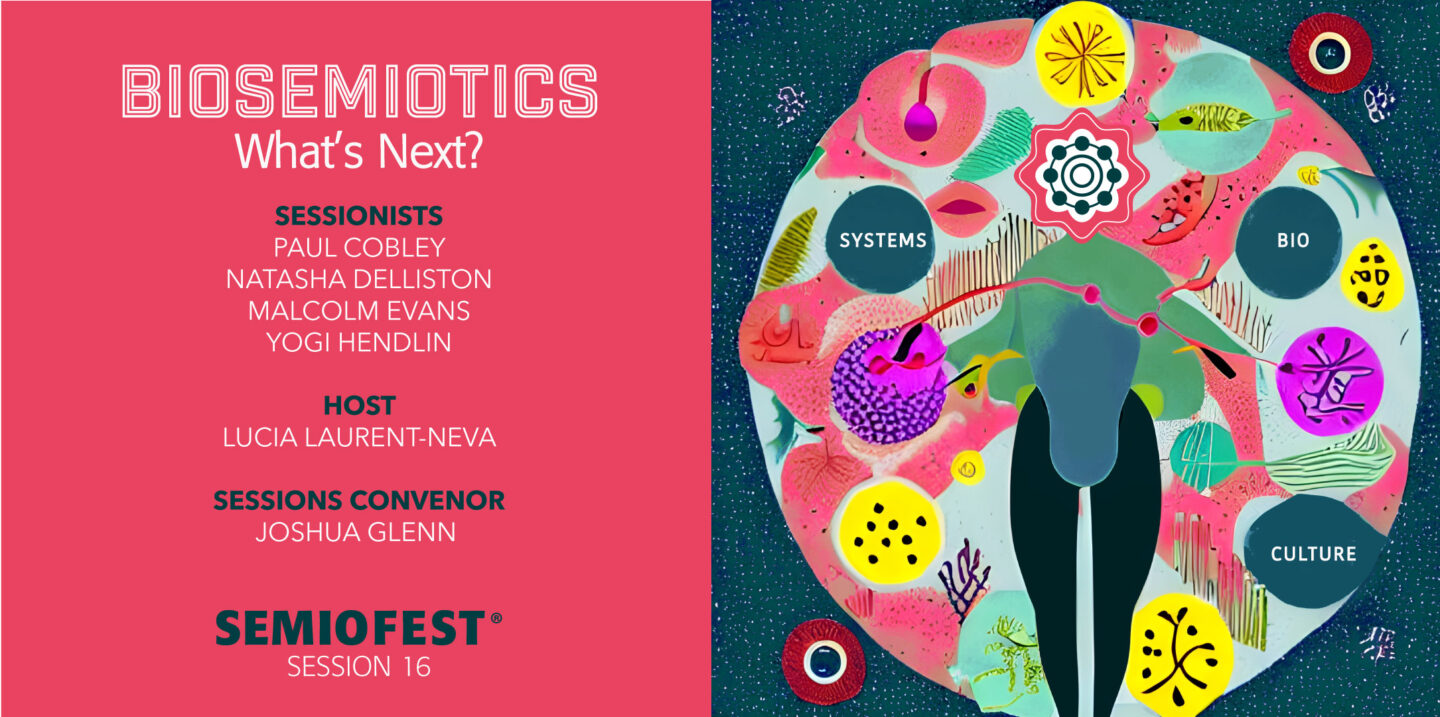
SEMIOTICS OF SUSTAINABILITY (#15 — 3/23). Lucia Laurent-Neva, host. We’ve invited applied semioticians from Argentina, China, and France to help us perceive “sustainability” through various different lenses… and also to discuss context-appropriate future strategies. Ximena Tobi (Argentina), Samuel Grange (France), William Liu (China).
BIOSEMIOTICS: WHAT’S NEXT? (#16 — 4/23). Malcolm Evans, host. Proceeding from the premise that semiosis is intrinsic to all living nature, biosemiotics practitioners have developed a holistic and integrated understanding that radically challenges — and can also reboot and revitalize — the way that we applied semioticans think about and practice our craft. This session’s participants are deeply immersed in, and imaginatively engaged with this still-emerging field. Paul Cobley (UK), Natasha Delliston (UK), Yogi Hendlin (Netherlands).
UMBERTO ECO (#17 — 5/23). Our panelists covered how they first came across the great Italian semiotician Umberto Eco, how he inspired them, the key ideas and tools that they use of his, and his legacy: what he can continue to tell us about today’s semiotic realities. Kristian Bankov (Bulgaria), Giulia Ceriani (Italy), Carlos A. Scolari (Spain), Alfredo Troncoso (Mexico).
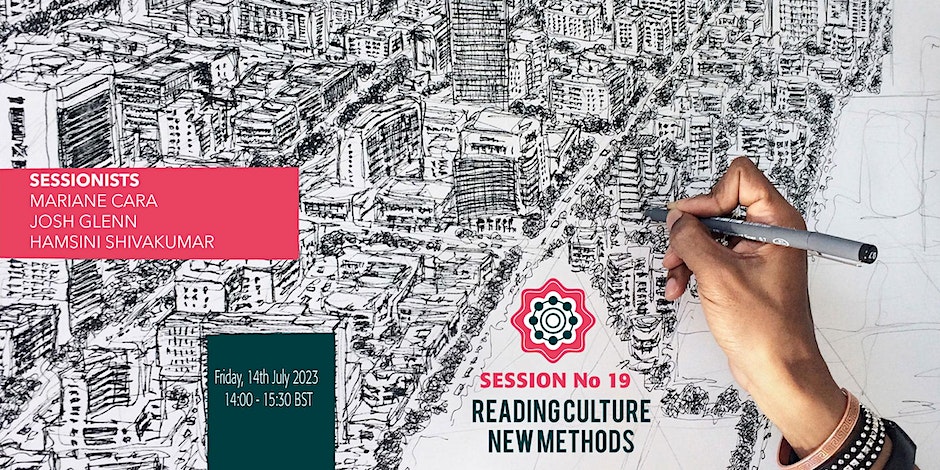
AI & SEMIOTICS (#18 — 6/23). Hamsini Shivakumar, host. Some commercial semioticians have for years deployed AI tools to help make sense of data, while others have resisted doing so. We’ve gathered a panel of experts to discuss questions like: Is AI-generated “meaning”… meaningful? And: What are the potential upsides and downsides of incorporating AI into our methodologies? Dario Compagno (France), Kay O’Halloran (UK), Tim Stock (USA).
READING CULTURE: NEW METHODS (#19 — 7/23). Hamsini Shivakumar, host. Sociologists and anthropologists are recognized for their ability to identify and analyze complex cultural norms and forms. But when it comes to culture, Semioticians are suspected (unfairly or not) of relying on analytical frameworks dating to the 1960s. We’ve convened a show-and-tell session in which three commercial semioticians shared new semiotics-driven methodologies they’ve developed for “reading” culture. Mariane Cara (Brazil), Josh Glenn (USA), Hamsini Shivakumar (India).
BODY SEMIOTICS (#20 — 9/23). Chris Arning, host. Recent innovations in biosemiotics and the intersection between semiotics and cognition have shown how we need to pay attention to meaning that is literally incarnated in our bodies. Our speakers discussed memory in our bodies (and how this affects our thoughts, behaviour and language), the representation of bodies in consumer brand imagery, and finally, how we write meanings onto our bodies via the complex symbolism of tattoos. Jamin Pelkey (Canada), Audrey Bartis (France), Chris Martin (Canada).
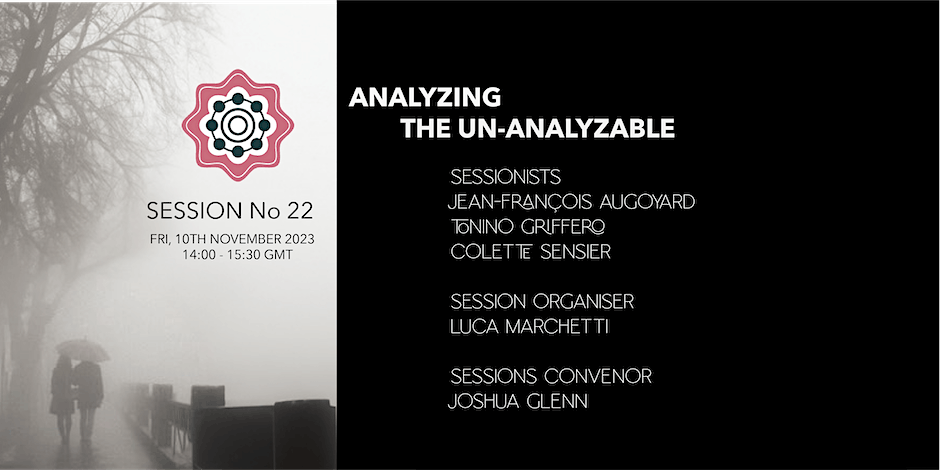
SEMIOTICS & THE SCIENTIFIC METHOD (#21 — 10/23). Vijay Parthasarathy, host. Does commercial semiotics lack scientific rigor? Is the approach too ad hoc? How should commercial semioticians counter perceived “expert” bias? What is the optimal balance to strike between “science” and “art”? Our panelists addressed such concerns — and along the way, bust a few myths about how semioticians explore cultural meaning. Roman Esquada (Mexico), Jamin Pelkey (Canada), Hamsini Shivakumar (India).
ANALYZING THE UNANALYZABLE (#22 — 11/23). Luca Marchetti, host. Inspired by A.J. Greimas’s lyrical late text On Imperfection (1987), which seeks to describe the all-but-indescribable connection between our sensual relationship with the world and our drive to make sense of things, this session asks expert practitioners to share their tools and methodologies for analyzing ambiances, atmospheres, sensory experiences, aesthetics, and other seemingly subjective phenomena. Jean-François Augoyard (France), Tonino Griffero (Italy), Colette Sensier (UK).
2022
[I took 2022 off from coordinating sessions.]
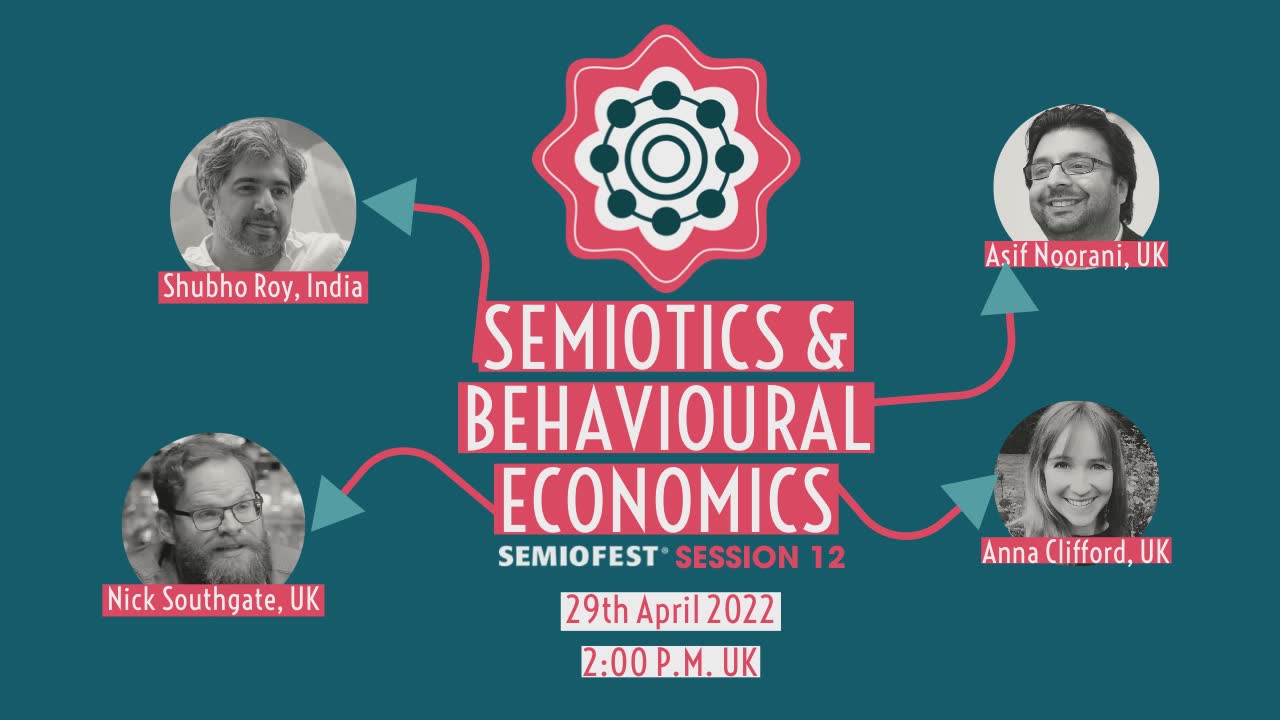
SEMIOTICS & UX (#10 — 2/22). Dominika Noworolska (Scotland), Sarah Johnson (Canada), Lucia Trezova (Czechia) discussed how they are involved in UX and how they’ve found semiotics helpful to enrich research opportunities.
FLASH DECODING (#11 — 3/22). At Semiofest, we have semioticians of all levels jostling shoulders, which means we can learn from each other and our diverse approaches. We want to test the hypothesis that different perspectives can enrich the overall interpretation and we want to explore cultural differences too.
SEMIOTICS & BEHAVIORAL ECONOMICS (#12 — 4/22). Chris Arning, host. Anna Clifford Mariani (UK), Asif Noorani, (UK) Shubho Roy (India), and Nick Southgate (England) discussed mutual overlaps and areas of synergy between the two disciplines.
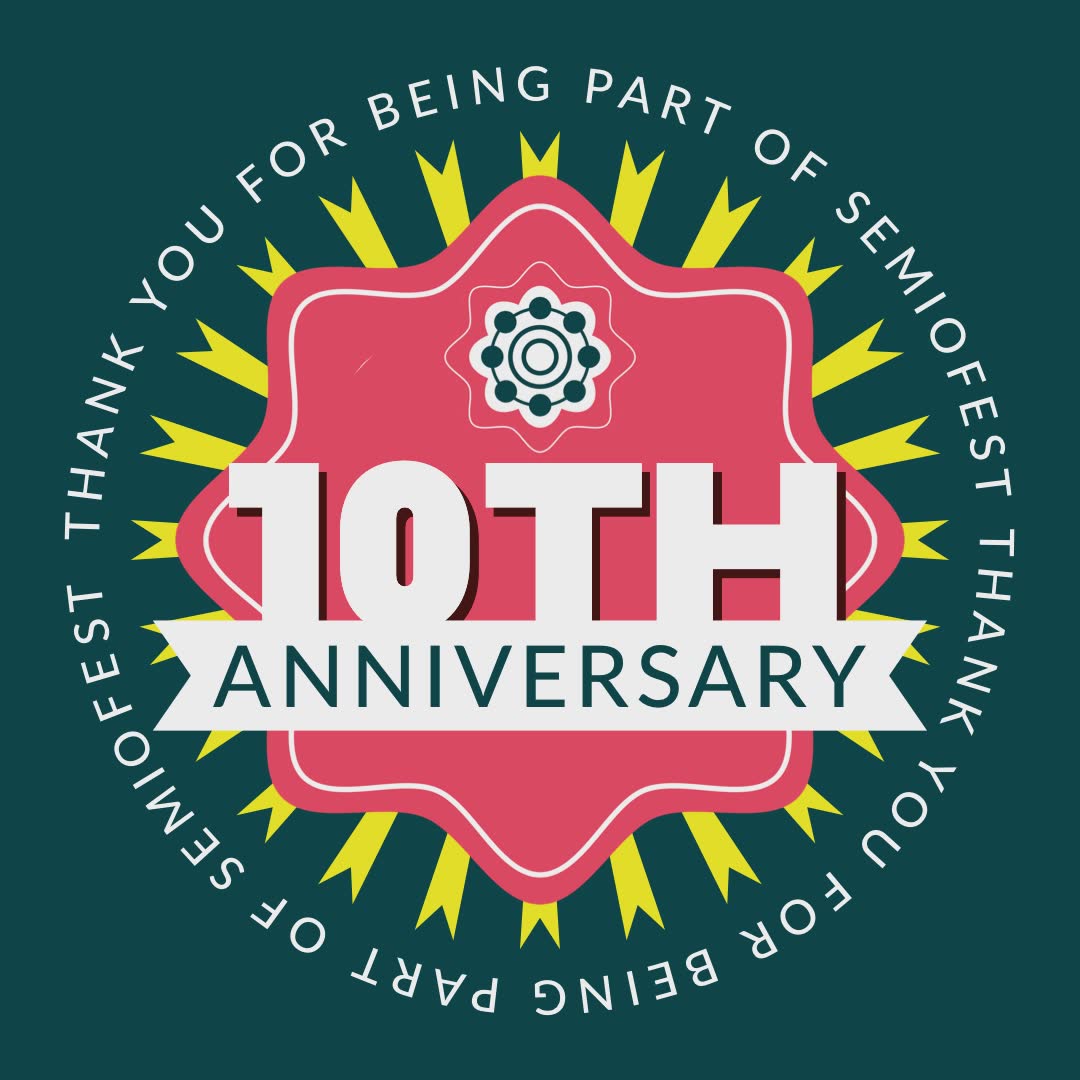
10th ANNIVERSARY SEMIOFEST (#13 — 6/22). An informal celebration of all things Semiofest. We are curious! What does Semiofest mean to you?
SEMIOTICS AS EXPERT TESTIMONY (#14 — 9/22). Chris Arning (UK), Kaie Koppel (Estonia). How do you think would you approach analysis differently if you were to be hired as an expert witness? In this session, we are hearing from two semioticians who have both been in this position.
2021
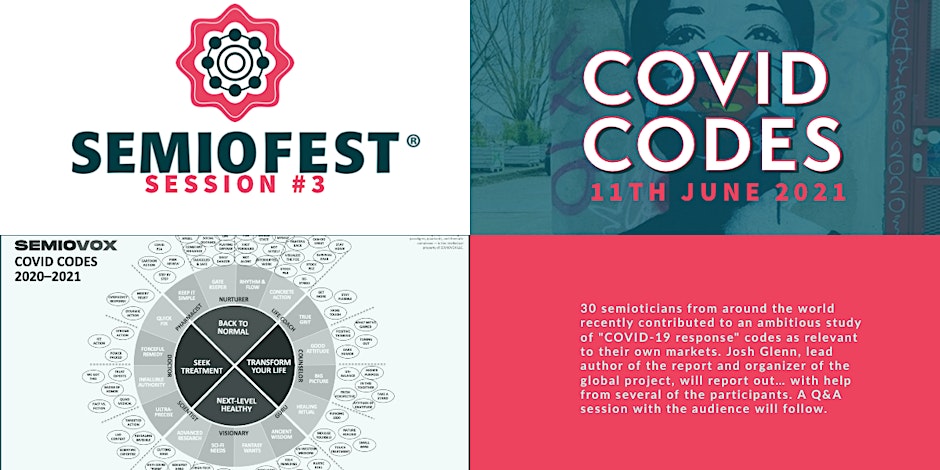
SEMIOTIC SQUARE (#1 — 4/21). Josh Glenn (USA) and Maria Papanthymou (Russia) discussed the uses of the so-called “semiotic square” in our practices — before inviting the attendees to share their own ideas.
ASK THE SEMIOTICIAN (#2 — 5/21). Luca Marchetti (Italy/France), Gabriela Pedranti (Spain/LatAm), Charles Leech (Canada), and Vladimir Djurovic (China) responded to queries about client management, demonstrating the validity of semiotics, and more.
COVID CODES (#3 — 6/21). Josh Glenn, host. Sónia Marques (Portugal), Seema Khanwalkar (India), Maciej Biedziński (Poland), Ximena Tobi (Argentina), and Wei Fen Lee (Singapore) spoke about their culture-specific contributions to Semiovox’s global COVID CODES study.
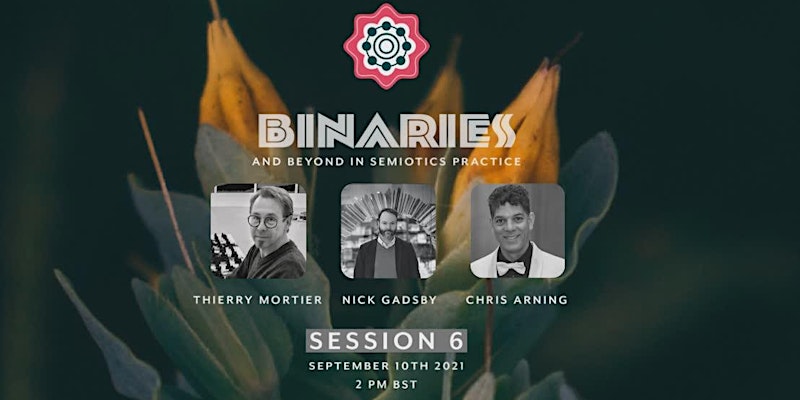
R/D/E (#4 — 7/21). Al Deakin (England), Natasha Delliston (England), and Malcolm Evans (Wales) discussed new and improved ways for semiotic practitioners to deploy the Residual-Dominant-Emergent (RDE) framework.
FUTURING (#5 — 8/21). Tim Stock (USA), Gemma Jones (England), Malex Salamanques (England), and Hamsini Shivakumar (India) shared their experiences in leveraging non-semiotic methodologies to help clients catch a glimpse of what the future might hold… and also to help shape that future.
BINARIES (#6 — 9/21). Thierry Mortier (Switzerland), Nick Gadsby (England), and Chris Arning (England) shared their perspectives on the Saussurian notion that binary opposition is the means by which individual elements of a “semiosphere” have meaning.
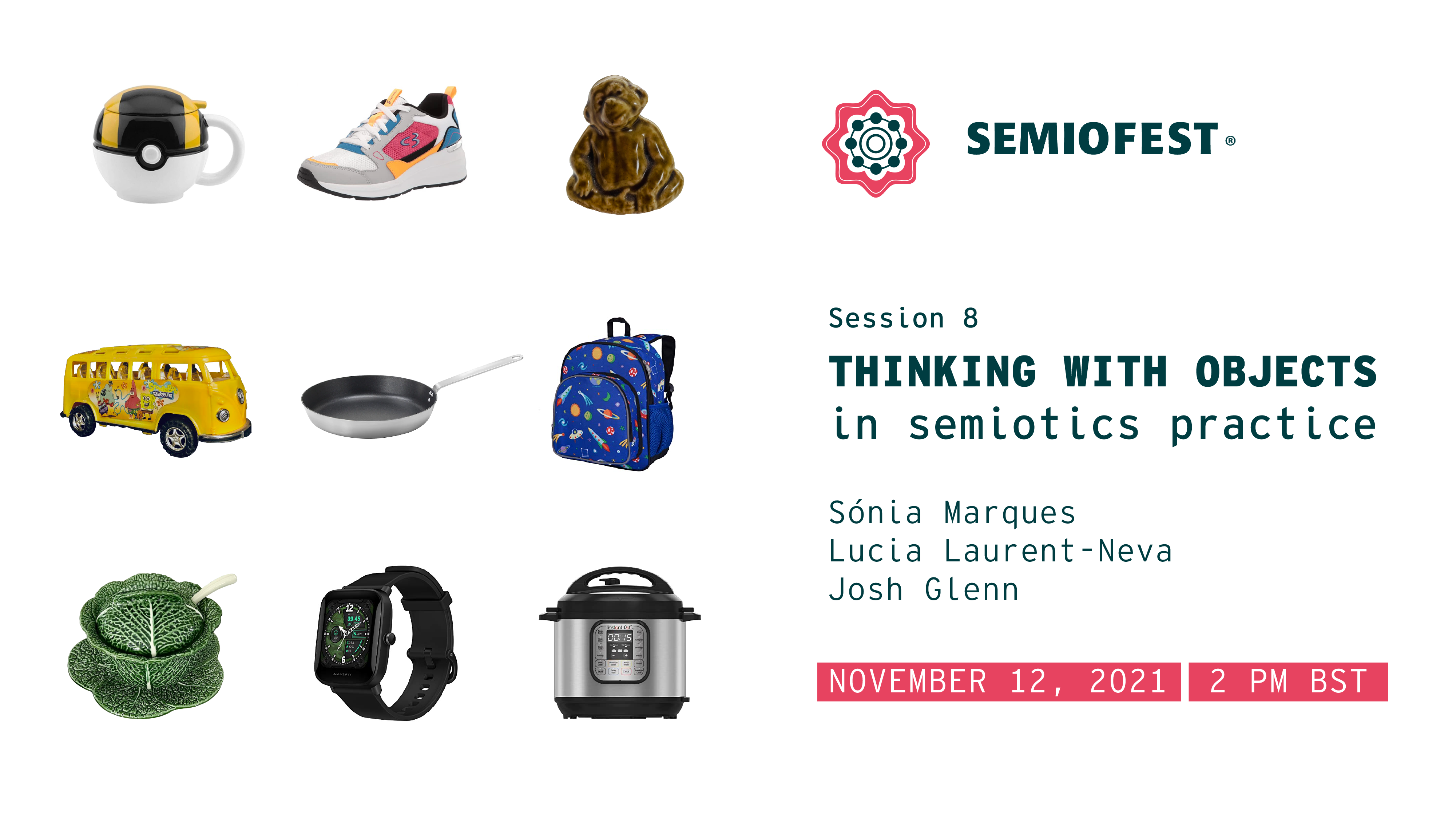
HIGHS & LOWS OF SEMIOTIC PRACTICE (#7 — 10/21). We dedicated a session to discussions of the following questions: How did you find your way to doing semiotics? What major challenge(s) do you struggle with as a semiotician? What advice would you give to young person about the highs and lows of an applied semiotics practice?
THINKING WITH OBJECTS (#8 — 11/21). Sónia Marques (Portugal), Lucia Laurent-Neva (England), and Josh Glenn (USA) shared their approaches to analyzing objects in order to reveal hidden aspects of social reality.
C.S. PEIRCE (#9 — 12/21). Mariane Cara (Brazil), Chris Barnham (England), and Hamsini Shivakumar (India) shared examples of how they’ve applied the pioneering US semiotician C.S. Peirce’s frameworks in their own practices.

